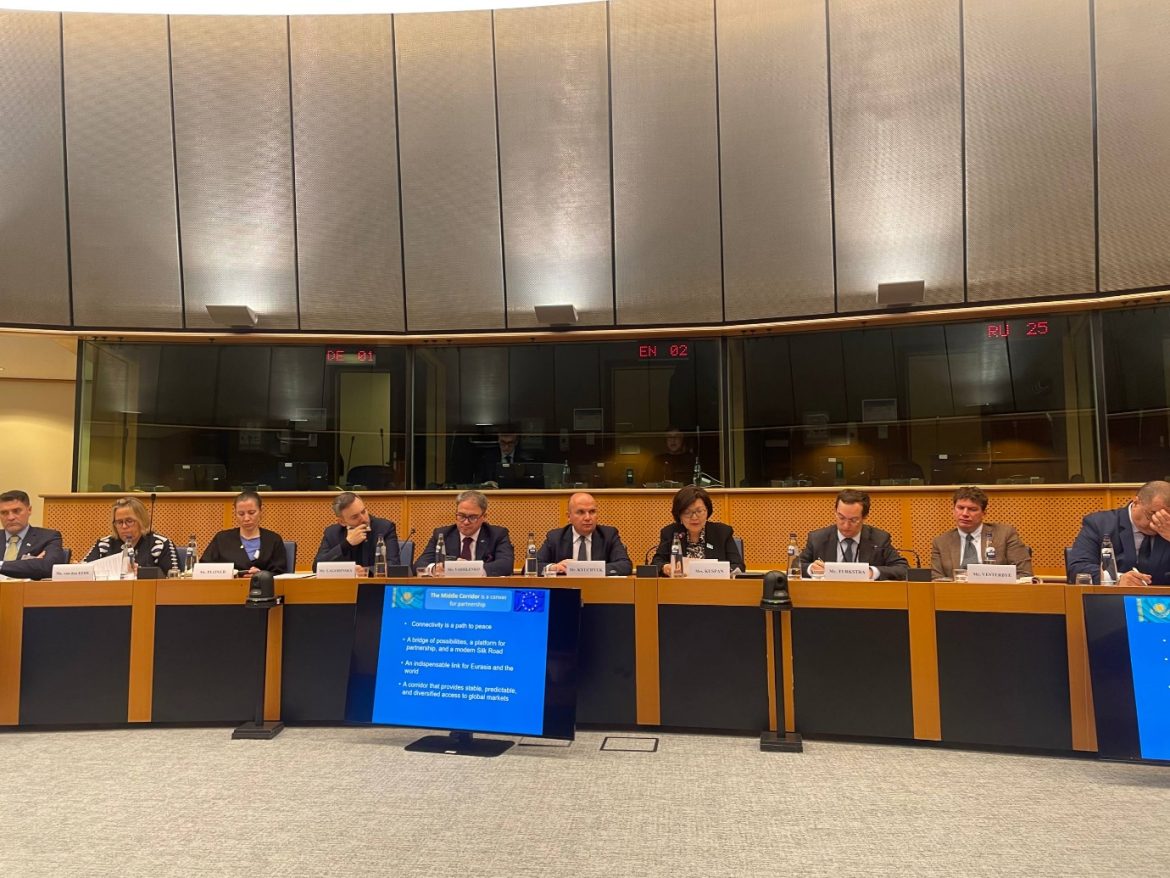WNAM REPORT: The European Parliament hosted a roundtable on Strengthening EU-Kazakhstan Connectivity: Perspectives and Strategic Potential of the Middle Corridor on Nov. 19 showcasing Kazakhstan’s pivotal role in Europe’s future connectivity, strategic autonomy, and green transition. The event brought together MEPs, diplomats, and experts.
Opening the roundtable, MEP Ilhan Kyuchyuk, chair of the Committee on Legal Affairs, set the tone by framing the Middle Corridor not simply as logistics infrastructure, but as a strategic symbol, according to the EU Reporter article released on Nov. 20.
“It is a corridor of opportunity, a bridge of stability, and increasingly a symbol of strategic autonomy and shared prosperity,” he said.
He highlighted Eurasia as a single strategic space, the importance of the EU-Kazakhstan Enhanced Partnership and Cooperation Agreement (EPCA), and challenges including regulatory harmonization, infrastructure investment, and logistics bottlenecks.
Kazakhstan’s Ambassador to EU Roman Vassilenko underscored Kazakhstan’s leadership in corridor development, including railway modernization, port expansion at Aktau and Kuryk, digitalized customs, and alignment with global standards.
Aigul Kuspan, member of the Mazhilis (lower house of the Kazakh Parliament), highlighted Kazakhstan’s key role in regional trade, noting that 85% of East-West overland cargo passes through the country. She also pointed to $35 billion already invested in transport infrastructure and 1,700 kilometers of new railways currently under construction.
European Commission representative Fabienne Van Den Eede linked the corridor to the Global Gateway strategy, emphasizing climate, digital, and infrastructure cooperation.
The roundtable confirmed that the Middle Corridor is central to Europe’s diversification strategy, offering a reliable alternative to politically exposed routes. Kazakhstan’s geography, investments, and diplomacy position it as a land-linked hub, with EU instruments like the Global Gateway and EPCA supporting long-term cooperation, regulatory alignment, and green development.


